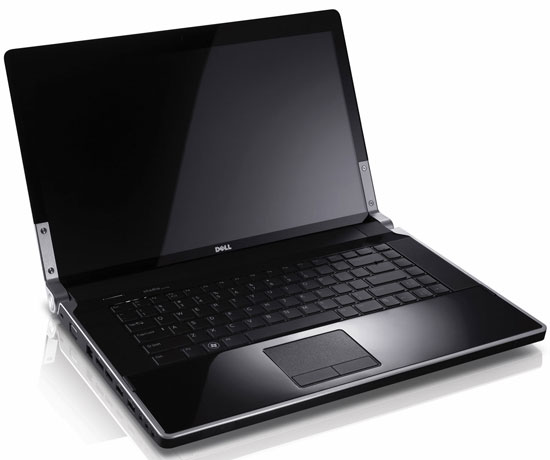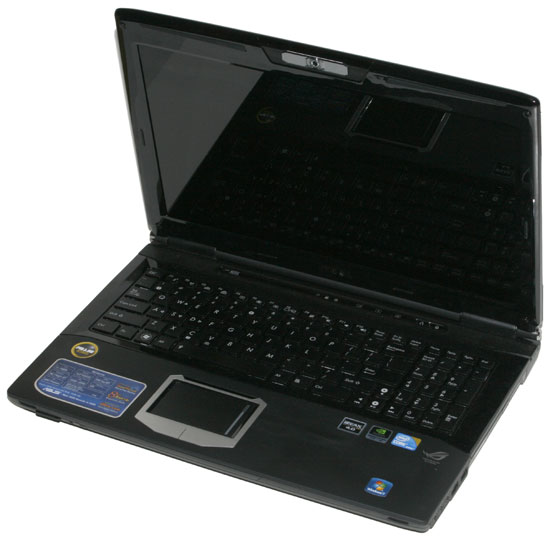Mobile Buyers' Guide, December 2009
by Jarred Walton on December 6, 2009 12:00 AM EST- Posted in
- Guides
Upper Midrange: $1150 to $1500
Naturally, you can add even more upgrades to many of the laptops mentioned so far to get them into this price range. If you purchased a laptop that doesn't get great battery life, you might consider adding a high capacity battery, or a second battery (or two) if you need to go untethered for a while. Batteries can be quite expensive, however, and the need to hibernate/resume when swapping batteries can be an annoyance.
The short summary of the upper midrange price segment is that you can get faster versions of midrange laptops. Where before you had to decide between either a faster GPU or a quad-core CPU, it's now possible to get both in a single system. You can also upgrade LCDs on some laptop models from large OEMs, like the Studio XPS 16 where the 1080p RGB LED LCD adds $250 to the price. If you want a good LCD, there's a lot to like with the Studio XPS 16 (and presumably any other RGB LED LCDs, though they're hard to find).
The big problem with laptops once you get into this price range is that many are unbalanced in one fashion. Ultra-fast CPUs with low-end GPUs are usually unnecessary, and in fact most laptop users rarely need the fastest CPU options. Adding $250 to move from a P8600 to a T9700 is a lot of money for a small increase in performance; a good SSD would almost certainly be a far more noticeable upgrade (albeit with less capacity). Let's talk about our two top recommendations for this price bracket, representing very different computing styles.
Another Good LCD

Dell has been doing some pretty nice sales during the holidays and the Dell Studio XPS 16 is currently going for $1049 ($309 instant savings). We'd add the 1080p RGB LED, HD 4670 GPU, and a 9-cell battery to get the price to $1444. At that point, you can decide if that's all you need or if you'd like an SSD, Blu-ray drive, a faster CPU, or perhaps a different color chassis - we like the white chassis, as the black casing is a fingerprint magnet. Some of the options obviously push the Studio XPS 16 into high-end territory, and without the rebate it's difficult to get a reasonably configured system for under $1500. For a good LCD, it's going to be difficult to beat this particular Dell (even if the contrast ratio is "only" 500:1).
Midrange Gaming II
If you're after raw performance, one of the best candidates we've tested is the ASUS G51J. It comes loaded with just about everything you could want, outside of battery life. The G51J uses the latest Core i7-720QM CPU, which provides four CPU cores with four additional virtual cores via Hyper-Threading. The standard clock speed of 1.6GHz is a limitation for heavily threaded tasks, but the Turbo modes allow single-threaded clock speeds of up to 2.8GHz. The net result is that it provides plenty of speed for most users and is plenty fast for gaming laptops that don't use multiple GPUs.

On the graphics side, ASUS includes a GeForce GTX 260M (similar to the 9800M GT but clocked faster). It's not as fast as desktop GTX 260 cards, but it's fast enough to run many games at the native 1920x1080 LCD resolution and high detail settings. Laptops with GTX 280M are about 20% faster in GPU limited situations, but they also cost several hundred dollars more - we'll discuss those options in the high-end category. The G51J also includes 4GB DDR3 memory and two 320GB 7200RPM hard drives (not in RAID by default). The LCD is a low contrast panel, and battery life maxes out at around 90 minutes (with a relatively small 53Wh battery), but those are the only complaints we have with the G51J. ASUS also has a "3D" model with NVIDIA's 3D VISION glasses and a 120Hz LCD, but the cost for that upgrade is an extra $250.
Really, if you're interested in an affordable gaming laptop, just try to find anything with (in order of decreasing performance) a GTX 260M, 9800M GTX/GT, 8800M GTX, GTS 260M, GTS 160M/9800M GTS (essentially the same thing), 9800M GS, GTS 250M, GTS 150M, or 8800M GTS. Yes, that's a completely confusing list, and that's just the NVIDIA side of things! All of those chips have at least 64 SPs and as many as 112 SPs (for the GTX 260M), with 256-bit memory interfaces. They can all handle 1280x800 at high detail, and 1440x900 for nearly all of the GPUs (with a few games causing problems). You'll want the 96 SPs or more to run 1680x1050 and 1080p resolutions.
On the ATI side, there are quite a few theoretical chips that we're waiting to see in actual laptops, and we're not sold on their mobile drivers. They've updated drivers a couple times with the Win7 launch, but it's not clear if that's the way of things to come or if that was just a short-term decision to get Win7 performance up to snuff. The fastest single-GPU ATI solution that we're aware of is the HD 4850 which shipped in the MSI GT725, but finding that laptop in stock anywhere is a crapshoot at best; performance would be competitive with the GTX 260M should you find one, but pricing is generally going to be above $1500. A rumored Mobility Radeon HD 5670 may come out at some point, but it's not shipping. In fact, the fastest shipping ATI solution that you can find for under $1500 is going to be the Mobility Radeon HD 4670, which has half as many stream processors (320) as the HD 4830. You can find this GPU in the Dell Studio XPS 16, which we already discussed.










49 Comments
View All Comments
notanakin - Monday, December 7, 2009 - link
Sorry - here's the link: http://pzportal.net/main/2009/11/notebooks-price-l...">http://pzportal.net/main/2009/11/notebooks-price-l...Roland00 - Sunday, December 6, 2009 - link
I seconded this, I just bought the dual core su2300 model, and have no complaints so far about it besides the horrible viewing vertical angles due to the tn panel and glossy.I am very surprised on how fast the processor is for normal every day tasks. It isn't my overclocked I7 but for most everyday tasks you wouldn't care about the difference. This is what my opinon the netbook experience was supposed to be, save the atoms for things such as cell phones, gps, blu ray players etc.
ImSpartacus - Sunday, December 6, 2009 - link
I tried my best to goad my parents into getting my little sister a 1410 for her first laptop back when the SU2300 model was $399 (free shipping) on Newegg. They didn't want to buy it early.Then it ballooned to $409 (no free shipping) and they felt cheated.
They ended up getting a bare-bones SL410 for it's ruggedness.
AgeOfPanic - Sunday, December 6, 2009 - link
It ballooned by 10 dollars? 10 Dollars is not ballooning, it's 10 dollars.bennyg - Sunday, December 6, 2009 - link
Shipping.Just to compound your useless comment with another.
GoodRevrnd - Sunday, December 6, 2009 - link
I have much interest in the 1410 and am thinking it might be a good replacement laptop for my g/f. It is ridiculous what you get in this thing considering what I paid for my Vaio Z a year ago (granted the screen on it is to die for).KikassAssassin - Sunday, December 6, 2009 - link
I'm curious about your statement that "(it takes about three seconds to turn off the discrete GPU and 15 seconds to turn it back on)" on the UL80Vt, because that hasn't been my experience at all. My UL80Vt takes the same amount of time to switch from the Intel to the nVidia GPU as it does to switch from the nVidia to the Intel GPU: About three to four seconds, both ways.The only time I've had it take longer is if I have a 3D game running when I try to switch graphics modes, in which case it forces me to close the game before it'll switch.
JarredWalton - Sunday, December 6, 2009 - link
Well, I can't even verify the time right now, since after updating the Intel and NVIDIA drivers I can't get the Hybrid GPU feature to work. Need to fix that and then I'll confirm, but I know that it took significantly longer to enable G210M at least the few times where I paid attention. I'll confirm when I get the driver situation sorted out. :)feelingshorter - Sunday, December 6, 2009 - link
Try doing the test with all programs closed since i suspect that your running the flash 10.1 with GPU support, or even programs like the Zune software uses GPU acceleration. These little things might affect it. Maybe even having Win7 Aero on/off might make a difference. Looking forward to the full review of UL80Vt.Now back to studying exams at 4:10 AM...